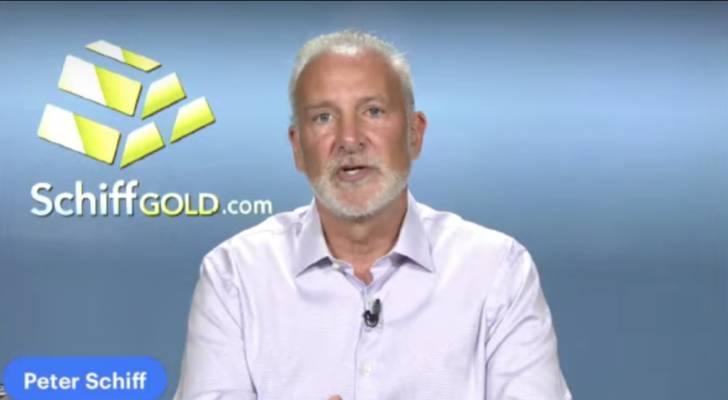Peter Schiff predicts gold could skyrocket to $100,000 an ounce and ‘there’s no limit’. Here’s why — and how you can capitalize

This article adheres to strict editorial standards. Some or all links may be monetized. In 2024, Peter Schiff, chief economist and global strategist at Euro Pacific Asset Management, predicted that the price of gold’s surging might be just be the beginning of its rally. Since then, the price of gold surged by 46%, with the […]
Houston man feels ‘guilty’ after business-class upgrade — but Ramsey Show tells him splurges are OK if you can pass this 5-question test. Would you?

A Houston man called into The Ramsey Show wondering how to draw the line when spending on upgrades that feel nice but aren’t strictly necessary. The 6 ft. 1-inch caller had splurged on the legroom of an “economy plus” airline seat for a step up in physical comfort — but was experiencing mental discomfort over […]
11,000 Canadians hit millionaire status in 2024 — here’s how you can copy their investing strategies

Canada is seeing a millionaire boom. In 2024, 11,000 Canadians joined the millionaire club, a 2.4% increase from 2023, according to the Capgemini World Wealth Report 2025. That growth was fuelled by an 18.5% surge in the S&P/TSX Composite Index, its best performance since 2021. But it wasn’t just stocks making fortunes — alternative investments […]
11,000 Canadians became millionaires last year — here’s the smart investing moves that can help you join them

Canada is seeing a millionaire boom. In 2024, 11,000 Canadians joined the millionaire club, a 2.4% increase from 2023, according to the Capgemini World Wealth Report 2025. That growth was fuelled by an 18.5% surge in the S&P/TSX Composite Index, its best performance since 2021. But it wasn’t just stocks making fortunes — alternative investments […]
GOP megadonor issues stark warning for US retirees — Trump’s Fed attacks may carry a ‘steep’ cost for your savings. How to protect your nest egg ASAP
This article adheres to strict editorial standards. Some or all links may be monetized. Ken Griffin, billionaire founder and CEO of hedge fund Citadel, is one of the Republican Party’s top donors. Yet his latest critique of U.S. President Donald Trump is strikingly sharp. Must Read Thanks to Jeff Bezos, you can now become a […]
15% of Canadians over 65 still working as ‘retirement plans fall apart’

We adhere to strict standards of editorial integrity to help you make decisions with confidence. Some or all links contained within this article are paid links. When picturing the traditional idea of retirement, you may think of a lucky person blowing out the candles on a cake, getting a gold watch as a parting gift […]
Costco Canada: Are the deals worth It? Canadians have their say

Grocery bills are eating up a sizeable portion of Canadian household budgets, and families are looking for every possible way to stretch their dollar. In 2023, the average household spent about $12,000 a year on food, according to Statistics Canada — roughly $1,000 a month when you include groceries and restaurant meals. Just keeping the […]
I’m 61, and some troubling health news has pushed up my retirement plans — but HR says I need to give them 3 months’ notice. What happens if I don’t?

Jack, a 61-year-old engineer, has spent the last 20 years working at his current employer, and he’s seriously considering his exit plans. However, his employer claims he must provide notice three months before he leaves his desk behind for good. Must Read Thanks to Jeff Bezos, you can now become a landlord for as little […]
Trump official threatens to fire ‘problem children’ air traffic controllers — how to get compensated for delays amid ongoing government shutdown

As the federal government remains shut down, the nation’s air travel system has been teetering, and Transportation Secretary Sean Duffy threatened to fire absentee air traffic controllers deemed responsible for causing thousands of flight delays. Upwards of thousands of flights have been delayed daily across the country since Oct. 1. Duffy claimed a small group […]
A couple is hurting over a lower credit score after an ex fails pays rent late — now their chance to buy a home may be gone. Here’s how to protect your credit score

It can be a challenge to leave a relationship in the past, especially when there’s a child involved. Even more so if ties to that old flame burn your finances in the here and now. That’s the situation Beth from Philadelphia unfortunately found herself in. Beth called into The Ramsey Show because her husband rents […]